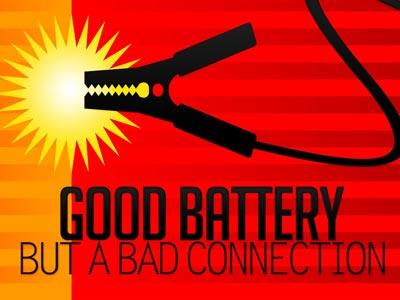-
Spirituality Of Creation Series
Contributed by Mike Wilkins on May 13, 2008 (message contributor)
Summary: A new course at God at the Pub. This talk deals with how the Celts met God in and through His creation.
Earthed Spirituality: The Spirituality of Creation
Last week, when we were introducing ourselves, Sarah talked about how hard it is to be a Christian around environmentalists – since it has been Christians who have sparked the industrialization of the world and much of the environmental disaster that we now live in.
Sarah’s classmates aren’t the only ones to think this way – nor are they the first.
Lynn White, a historian, wrote a paper for Science back in 1967 called “The Historical Roots of Our Ecological Crisis,” where, unlike Sarah’s classmates who would say that Christians caused the mess we are in, he basically says that Christianity itself caused the mess. Christianity’s placing of humanity as separate and over nature has allowed us to exploit nature to its (and possibly our own) destruction. He posits that since the problem has a religious cause, that it may have a religious, and particularly Franciscan, solution.
I actually think that the problem lies less in biblical Christian teaching than it does in the Christian adoption of Platonic dualism.
Let me ‘splain…
Plato’s Cave & Dualism
Socrates: And now, let me show in a parable how far our nature is enlightened or unenlightened: Behold! human beings living in an underground den, which has a mouth open towards the light; here these people have been from their childhood, and have their legs and necks chained so that they cannot move, and can only see before them, being prevented by the chains from turning their heads. Above and behind them a fire is blazing at a distance, and between the fire and the prisoners there is a raised walk; and you will see, if you look, a low wall built along the walk, like the screen which marionette players have in front of them, over which they show the puppets.
This metaphor caught on and it led to a dualism that said that the unseen or spiritual world was better (both qualitatively and quantitatively) and “more real” that the seen and natural world.
It impacted Christianity and was adopted to a certain extent by Augustine and fully by Aquinas.
Modernism grabbed on to this dualism and ran with it. Even in this “post modern” age we see this dualism in movies like The Matrix – I’ve had Christians try to tell me that The Matrix has such a Christian world view, and I answer, “No, it has a Platonic world view” -- a biblical world view says that the physical is created by the God we worship and it is declared good (both qualitatively and quantitatively) by God.
When you combine the belief that this visible world is secondary at best with good old greed, you get the present ecological crisis that we find ourselves in.
Patrick would not have read Augustine and likely not Plato!
Patrick, and the Celtic saints that came after him, had a holistic understanding of the cosmos, with a very fine line between the seen and the unseen worlds. This is why last week we saw that Patrick could, in the same breath, ask the protection of the natural elements and the spiritual beings in the Lorica.
When Patrick calls on
the strength of heaven:
Light of sun,
Radiance of moon,
Splendor of fire,
Speed of lightning,
Swiftness of wind,
Depth of sea,
Stability of earth,
Firmness of Rock… for his protection, he is not calling on shadows on the side of a cave!
The old Irish saying was “Heaven is only a foot and a half above a man’s head.”
It is good to remember that Patrick’s faith was formed out in the countryside, praying constantly in the out-of-doors for six to ten years
Patrick’s studies in theology later in life did not seem to change this creation orientation, and while Augustine, who shaped the theology of the Western Church, began his theology with the sinfulness of humanity and our need for redemption by the creator, Patrick begins his theology with God being the creator of all that is. We all do our theology from the place we’ve come from: Augustine was always very aware of his misspent youth – his experience of God was of the one who saved him from his sins, which were many. Patrick, on the other hand, experienced God first as a comforter and sustainer in hardship, and then as a rescuer from slavery.
According to tradition, Patrick was questioned about his faith by two heathen princesses, daughters of the high king of Laoghaire. “Who is God? Of whom is God?” they asked. “Where is his dwelling? … How will he be seen, how is he loved, how is he found?” The dialogue which ensued took the form of a great creation-oriented credo, very different in its emphasis to the redemption focus found in the Nicene and other western creeds.

 Sermon Central
Sermon Central



